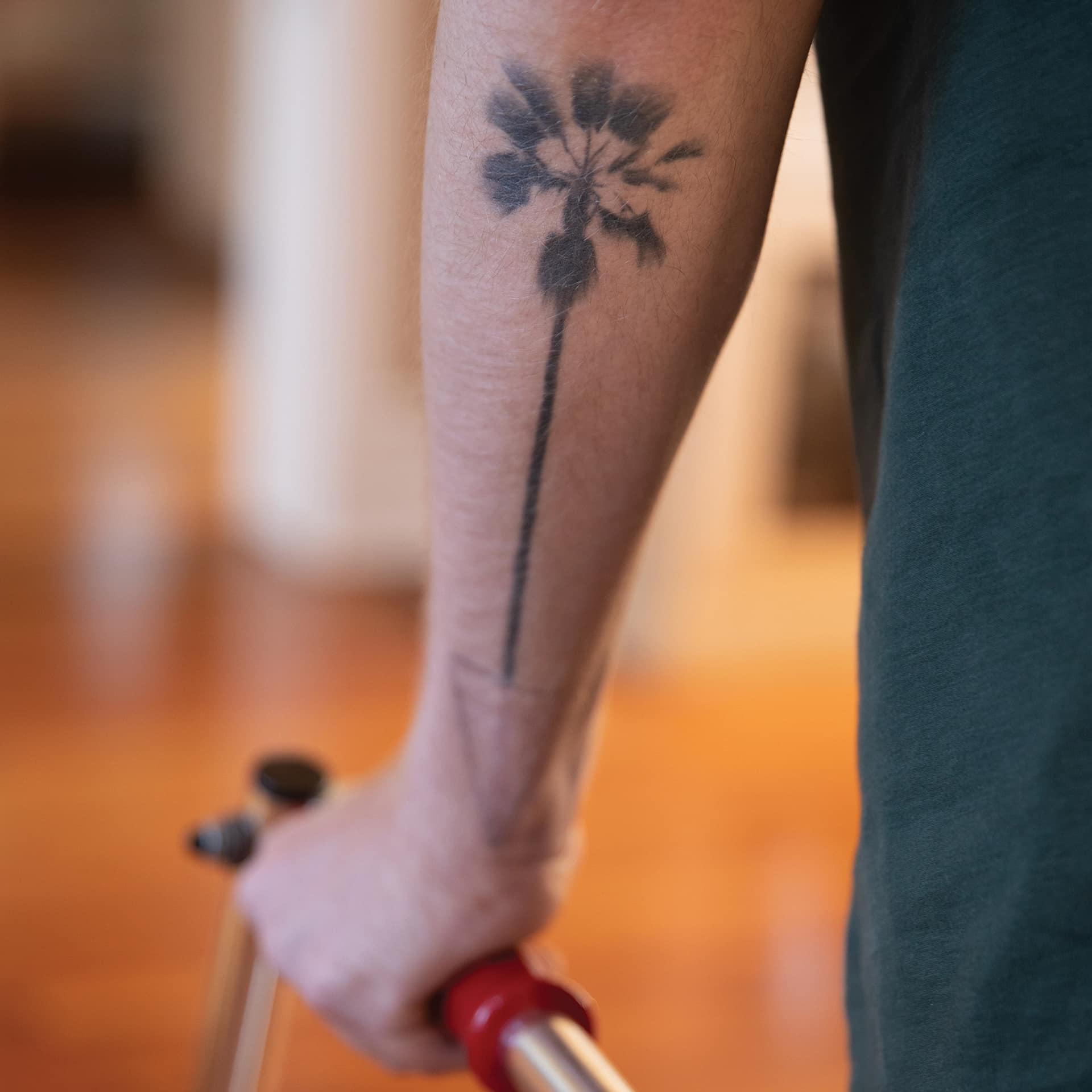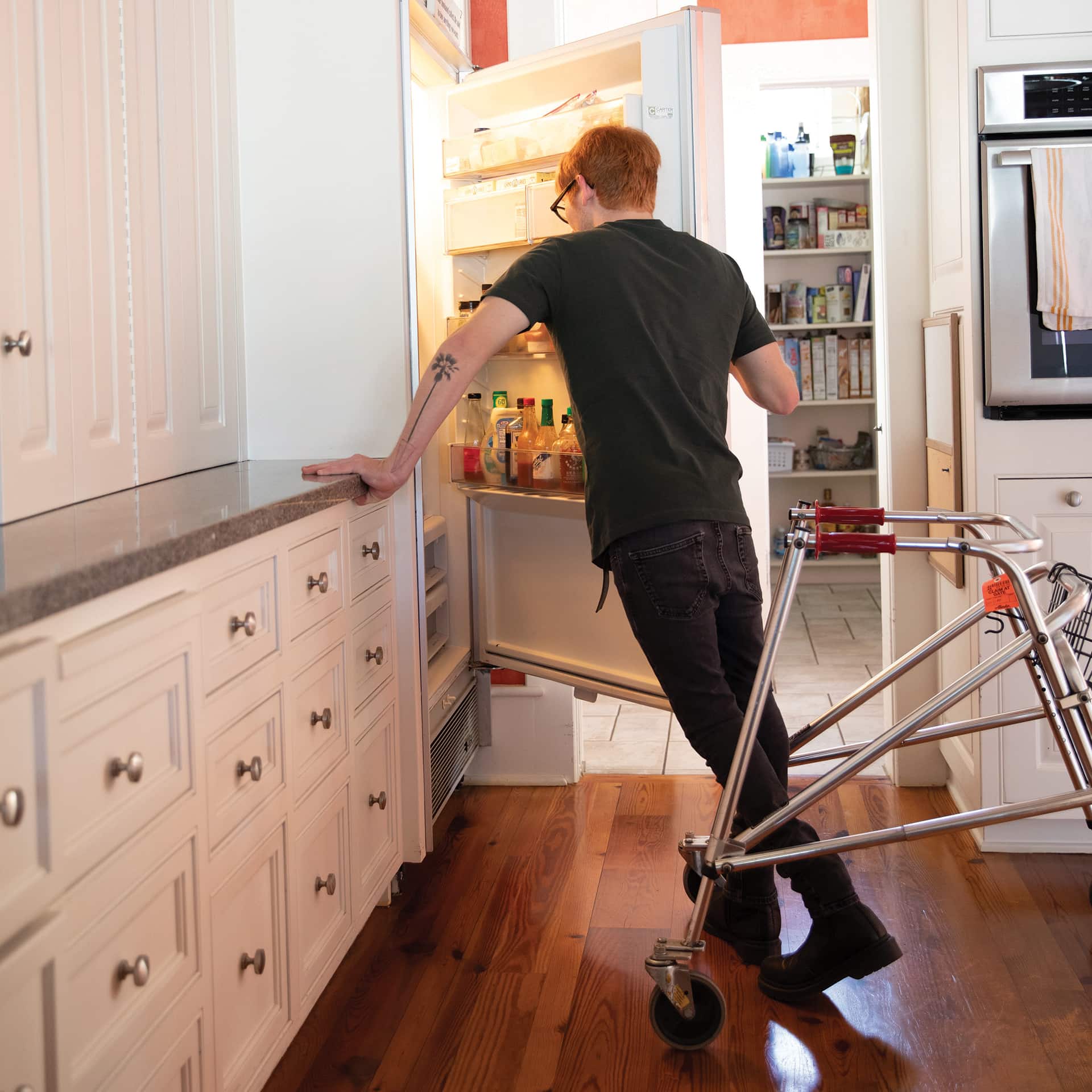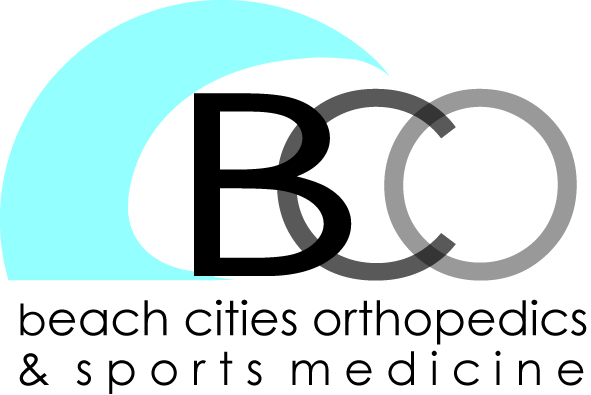From Manhattan Beach to Manhattan, New York, Jason Decker Sloves Refuses to Let Cerebral Palsy Get in the Way of His Dreams
State of mind.
- CategoryUncategorized
- Written & photographed byKat Monk
Jason Decker Sloves, 22, refers to the Manhattan Beach neighborhood where he grew up as “a city on a hill.” Most locals refer to it as the Hill Section, which spans west from Sepulveda, south from Manhattan Beach Boulevard, north from Boundary Place and east from Ardmore.

Hills themselves serve as an impediment for Jason because he was diagnosed with cerebral palsy at the age of 15 months. Yet Jason is passionate about living an independent life and refuses to allow his diagnosis to define him.
“The wires that connect from my brain to my legs are disconnected—that’s cerebral palsy,” explains Jason of his condition. “It affects everyone who has it in different ways. Some people with cerebral palsy have a hard time communicating. Some people can’t walk. Some can’t do both. Some can do both.”
Cerebral palsy is a physical disability that affects muscle tone and posture. Before birth, it is caused by damage to the immature brain as it develops. It is a lifelong disorder that presents itself in varying degrees of disability in different people. In Jason’s case, he began using a walker shortly after his diagnosis as a toddler. Leg braces were a part of his everyday routine growing up.
Most people take wearing pants for granted, but for years Jason wore cumbersome braces that prevented him from wearing anything but shorts. While in high school at Rolling Hills Preparatory School, Jason made the decision to no longer wear leg braces. Even if it meant he would end up in a wheelchair, he needed to live his life the way he wanted. Worried, his parents warned him of the risks. But he was determined to live hislife hisway.
For the remainder of his high school years, Jason chose to wear different versions of red skinny jeans—a deeply rewarding experience for him to start shaping his own individual identity with a creative outlet in his clothing expression. For the first time he felt that people were more focused on his brightly colored pants than his walker.
Rebecca Kandel-Scott, a teacher and mentor to Jason, helped her student realize that his disability does not need to define his future. His college dream was to be a graphic arts major at Parsons School of Design in New York City. New York can be an intimidating city for anyone, and especially for someone coming from the South Bay. This fast-paced and different way of life would be a huge task to undertake considering Jason’s disability, so he developed a plan to make it work.
While a sophomore in high school, he enrolled in Parsons’ two-week summer camp—a great opportunity to test this potential new living situation. He traveled with his cousin, and they chose to stay off-campus so Jason could get the lay of the land, measure his comfort and experience firsthand what it would be like to live in New York City.

During his junior year Jason attended a three-week camp, but this time he went alone and stayed on campus. One thing quickly became apparent: New York City is flat and would be easier for him to navigate on his own than even his hometown. “If I have enough energy, I can walk to wherever I need to go,” he says.
After these two amazing experiences, his college dreams were firmly intact. He knew this was the only college he wished to attend. Jason graduated fromParsons with a degree in communication design. His thesis project, Inaccessible Earth, identifies inaccessible places one with a disability might encounter.
Typically restaurants, coffeehouses, subways and other public spaces post a blue sticker stating that they are accessible. Jason’s idea was to create a red sticker with the graphic flipped so the handicapped person is backwards. Instead of reading “accessible,” it states “INACCESSIBLE.” His plan is to post the signage around town and encourage others do the same. Dinah Fried, his thesis advisor, shares, “His thesis topic is simultaneously personal and universal.”
Jason’s vision to educate the general public exposes how many cities remain inaccessible to the disabled. As Jason reminds us, “There is nothing worse than eating at a restaurant and then realizing that the only access to the bathroom is to go down a set of stairs.”
But he is committed to make a change. “I hope he brings his enthusiasm and clear mission with him as he heads out into the world after he graduates this spring,” says Dinah.
“I traded my red jeans for black ones—and bombers, and bikers, red sweaters and boots,” Jason reveals. “I wake up every day sore from the day before. But I get up, I show up and I don’t let cerebral palsy stop me from doing what I want to do.”
JASON’S YEAR IN HEALTH
DAILY NUTRITION:
Every day: Adderall 20mg XR, two multi-vitamins, two omega-3 vitamins, a chocolate fudge Think Thin protein bar, plus a five-hour energy drink almost every day.
WORKOUT ROUTINE:
Three times a week I go to the gym with my personal trainer, Danny, and work out doing a combination of arm, shoulder, core, chest and back exercises. Almost every day I walk around the city.
TRAINING SHOES:
I wear boots no matter what. They’re the easiest shoes for me to walk in.
Whole-Body Wellness
The medical team at The Health & Wellness Center @ BCO helps patients find the path to their best life.










